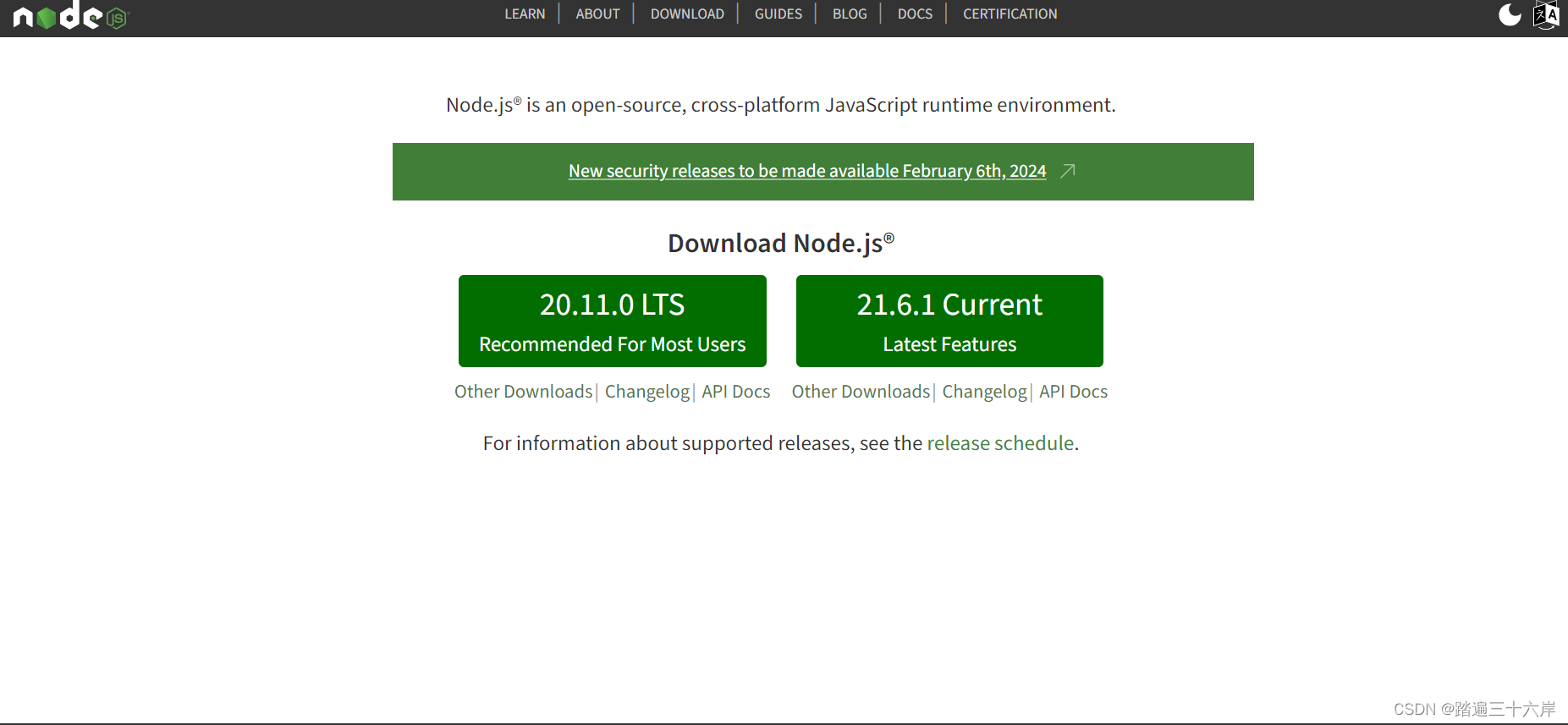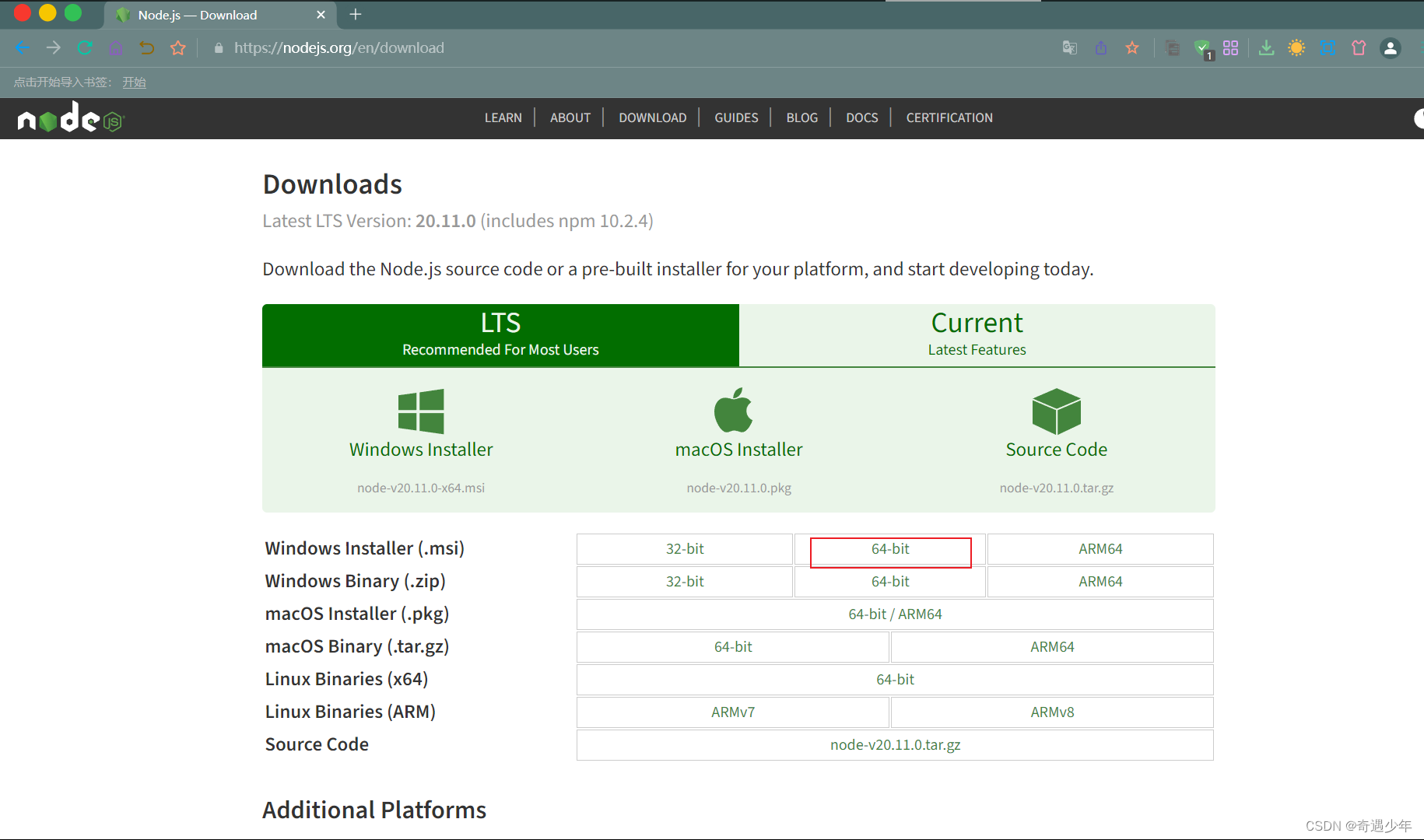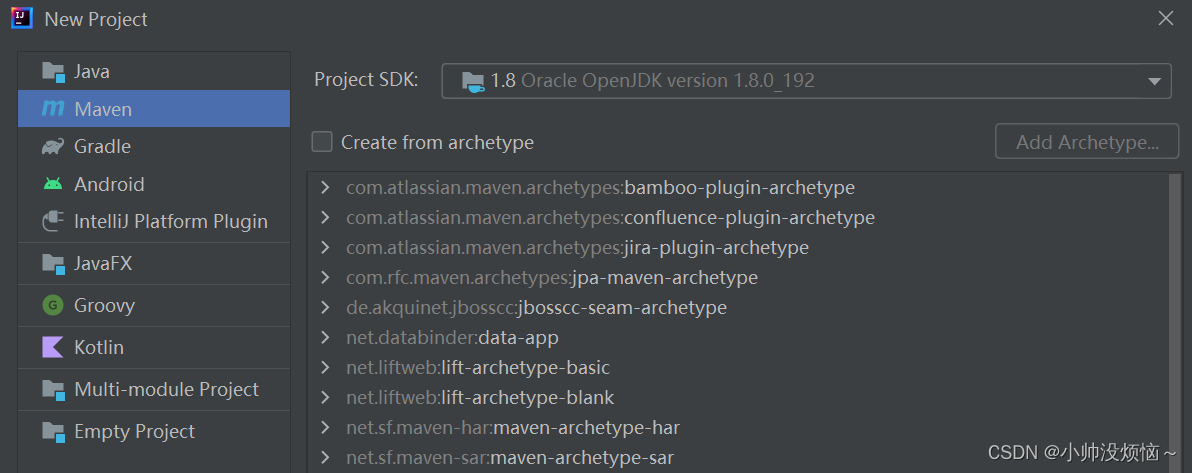1. XHR(Asynchronous JavaScript And XML)初始
1.1. xhr request demo
- 第一步:创建网络请求的AJAX 对象(使用 XMLHttpRequest
- 第二步:监听XMLHttpRequest 对象状态的变化,或者监听 onload 事件(请求完成时触发);
- 第三步:配置网络请求(通过open 方法);
- 第四步:发送send 网络请求;
<!DOCTYPE html>
<html lang="en">
<head>
<meta charset="UTF-8">
<meta http-equiv="X-UA-Compatible" content="IE=edge">
<meta name="viewport" content="width=device-width, initial-scale=1.0">
<title>JS-learn</title>
</head>
<body>
<button class="dataClick">get data</button>
<p></p>
<textarea class="dataArea"></textarea>
<script>
const buttonData = document.querySelector(".dataClick");
const dataInput = document.querySelector(".dataArea")
// debugger
buttonData.onclick = function getData(){
// 1. create XMLHttpRequest object
const xhr = new XMLHttpRequest()
// 2. monitor the change of status (macrotask)
xhr.onreadystatechange = () => {
if (xhr.readyState !== XMLHttpRequest.DONE) return
// get the response data
const resJSON = JSON.parse(xhr.response)
console.log('response: ', resJSON)
// data = resJSON
dataInput.value = JSON.stringify(resJSON)
}
// 2. configure request open
xhr.open('get', 'http://123.xxx:8000/home/multidata')
// 4. send request
xhr.send()
}
</script>
</body>
</html>
1.2. status of XHRHttpRequest



1.3. send synchronous request by xhr
<!DOCTYPE html>
<html lang="en">
<head>
<meta charset="UTF-8">
<meta http-equiv="X-UA-Compatible" content="IE=edge">
<meta name="viewport" content="width=device-width, initial-scale=1.0">
<title>JS-learn</title>
</head>
<body>
<button class="dataClick">get data</button>
<button class="clearClick">clear</button>
<p></p>
<textarea class="dataArea"></textarea>
<script>
const buttonData = document.querySelector(".dataClick");
const dataInput = document.querySelector(".dataArea")
const clearData = document.querySelector(".clearClick")
// debugger
buttonData.onclick = function getData(){
// 1. create XMLHttpRequest object
const xhr = new XMLHttpRequest()
// 2. monitor the change of status (macrotask)
xhr.onreadystatechange = () => {
if (xhr.readyState !== XMLHttpRequest.DONE) {
console.log(xhr.readyState)
return
}
// get the response data
const resJSON = JSON.parse(xhr.response)
console.log('response: ', resJSON)
console.log('status: ', xhr.status)
console.log('xhr: ', xhr)
// data = resJSON
dataInput.value = JSON.stringify(resJSON)
}
// 2. configure request open
xhr.open('get', 'http://xxxx.32:8000/home/multidata', true)
// 4. send request
xhr.send()
console.log('here is the log after sending')
}
clearData.onclick = () => {
dataInput.value = ""
}
</script>
</body>
</html>

// 2. configure request open
xhr.open('get', 'http://123.207.32.32:8000/home/multidata', false)

1.4. onload监听数据加载完成
<!DOCTYPE html>
<html lang="en">
<head>
<meta charset="UTF-8">
<meta http-equiv="X-UA-Compatible" content="IE=edge">
<meta name="viewport" content="width=device-width, initial-scale=1.0">
<title>JS-learn</title>
</head>
<body>
<button class="dataClick">get data</button>
<button class="clearClick">clear</button>
<p></p>
<textarea class="dataArea"></textarea>
<script>
const buttonData = document.querySelector(".dataClick");
const dataInput = document.querySelector(".dataArea")
const clearData = document.querySelector(".clearClick")
// debugger
buttonData.onclick = function getData(){
// 1. create XMLHttpRequest object
const xhr = new XMLHttpRequest()
// 2. monitor onload event
xhr.onload = () => {
console.log('onload')
dataInput.value = xhr.response
}
// 2. configure request open
xhr.open('get', 'http://xxx.32:8000/home/multidata', false)
// 4. send request
xhr.send()
}
clearData.onclick = () => {
dataInput.value = ""
}
</script>
</body>
</html>
1.5. http status code
<!DOCTYPE html>
<html lang="en">
<head>
<meta charset="UTF-8">
<meta http-equiv="X-UA-Compatible" content="IE=edge">
<meta name="viewport" content="width=device-width, initial-scale=1.0">
<title>JS-learn</title>
</head>
<body>
<button class="dataClick">get data</button>
<button class="clearClick">clear</button>
<p></p>
<textarea class="dataArea"></textarea>
<script>
const buttonData = document.querySelector(".dataClick");
const dataInput = document.querySelector(".dataArea")
const clearData = document.querySelector(".clearClick")
// debugger
buttonData.onclick = function getData(){
// 1. create XMLHttpRequest object
const xhr = new XMLHttpRequest()
// 2. monitor onload event
xhr.onload = () => {
console.log(xhr.status, xhr.statusText)
// make a judgement based on http status code
if (xhr.status >= 200 && xhr.status < 300) {
console.log('get response success: ', xhr.response)
} else {
console.log(xhr.status, xhr.statusText)
}
dataInput.value = xhr.response
}
xhr.onerror = () => {
console.log('send request error: ', xhr.status, xhr.statusText)
}
// 2. configure request open
xhr.open('get', 'http://xxx.32:8000/home/mudltidata', false)
// 4. send request
xhr.send()
}
clearData.onclick = () => {
dataInput.value = ""
}
</script>
</body>
</html>

1.6. get/post request with josn/form/urlcoded
<!DOCTYPE html>
<html lang="en">
<head>
<meta charset="UTF-8">
<meta http-equiv="X-UA-Compatible" content="IE=edge">
<meta name="viewport" content="width=device-width, initial-scale=1.0">
<title>JS-learn</title>
</head>
<body>
<button class="dataClick">get data</button>
<button class="clearClick">clear</button>
<p></p>
<textarea class="dataArea"></textarea>
<form class="info">
<input type="text" name="username">
<input type="password" name="password">
</form>
<p></p>
<button class="send">send request</button>
<script>
const buttonData = document.querySelector(".dataClick");
const dataInput = document.querySelector(".dataArea")
const clearData = document.querySelector(".clearClick")
const formEl = document.querySelector(".info")
const sendBtn = document.querySelector(".send")
// debugger
sendBtn.onclick = function getData(){
// 1. create XMLHttpRequest object
const xhr = new XMLHttpRequest()
// 2. monitor onload event
xhr.onload = () => {
console.log(xhr.status, xhr.statusText)
// make a judgement based on http status code
if (xhr.status >= 200 && xhr.status < 300) {
console.log('get response success: ', xhr.response)
} else {
console.log(xhr.status, xhr.statusText)
}
dataInput.value = xhr.response
}
xhr.onerror = () => {
console.log('send request error: ', xhr.status, xhr.statusText)
}
// 2. configure request open
// 2.1. http get
// xhr.open('get', 'http://xxx.32:1888/02_param/get?name=michael&age=18&address=广州市')
// xhr.send()
// 2.2. post: urlencoded
// xhr.open('post', 'http://xxx.32:1888/02_param/posturl')
// xhr.setRequestHeader('Content-type', 'application/x-www-form-urlencoded')
// xhr.send('name=michael&age=18&address=广州市')
// 2.3. post: formdata
// xhr.open('post', 'http://xxx.32:1888/02_param/postform')
// const formData = new FormData(formEl)
// xhr.send(formData)
// 2.4. post: json
xhr.open('post', 'http://xxx.32:1888/02_param/postjson')
xhr.setRequestHeader('Content-type', 'application/json')
xhr.send(JSON.stringify({name: "michael", age:18, height: 1.8}))
// 4. send request
// xhr.send()
}
clearData.onclick = () => {
dataInput.value = ""
}
</script>
</body>
</html>
1.7. encapsulate an ajax function to send requests
<!DOCTYPE html>
<html lang="en">
<head>
<meta charset="UTF-8">
<meta http-equiv="X-UA-Compatible" content="IE=edge">
<meta name="viewport" content="width=device-width, initial-scale=1.0">
<title>JS-learn</title>
</head>
<body>
<button class="send">send request</button>
<script>
// my ajax request class
function myAjax({
url,
method = 'get',
data = {},
headers = {},
success, // callback function after sending requeset successfully
failure // callback function where there is any error
} = {}){
// 1. create a XMLHttpRequeset
const xhr = new XMLHttpRequest()
// 2. monitor the data
xhr.onload = function() {
if (xhr.status >= 200 && xhr.status < 300) {
success && success()
} else {
failure && failure({status: xhr.status, message: xhr.statusText})
}
}
// 3. set the response type
xhr.responseType = 'json'
// 4. configure open
if (method.toUpperCase() === 'GET') {
const queryStr = []
for (const key in data) {
queryStr.push(`${key}=${data[key]}`)
}
url = url + '?' + queryStr.join('&')
xhr.open(method, url)
xhr.send()
}else {
xhr.open(method, url)
xhr.setRequestHeader('Content-type', 'application/json')
xhr.send(JSON.stringify(data))
}
return xhr
}
const sendBtn = document.querySelector(".send")
// sendBtn.onclick = function getData(){
// myAjax({
// url: "http://xxx.32:1888/02_param/gest",
// method: "GET",
// data: {
// name: "michael",
// age: 18
// },
// success: function(res) {
// console.log("res:", res)
// },
// failure: function(err) {
// alert(err.message)
// }
// })
// }
sendBtn.onclick = function getData(){
myAjax({
url: "http://xxx.32:1888/02_param/postjson",
method: "post",
data: {
name: "michael",
age: 18
},
success: function(res) {
console.log("res:", res)
},
failure: function(err) {
alert(err.message)
}
})
}
</script>
</body>
</html>
1.8. encapsulate an ajax function to send requests with Promise
function myAjax({
url,
method = "get",
data = {},
timeout = 10000,
headers = {}, // token
} = {}) {
// 1. create a XMLHttpRequest object
const xhr = new XMLHttpRequest()
// 2. create a promise object
const promise = new Promise((resolve, reject) => {
// 3. monitor data
xhr.onload = function() {
if (xhr.status >= 200 && xhr.status < 300) {
resolve(xhr.response)
} else {
reject({ status: xhr.status, message: xhr.statusText })
}
}
// 4. set response type and timeout
xhr.responseType = 'json'
xhr.timeout = timeout
// 5. configure open
if (method.toUpperCase() === 'GET') {
const queryStr = []
for (const key in data) {
queryStr.push(`${key}&${data[key]}`)
}
url = url + '?' + queryStr.join('&')
xhr.open(method, url)
xhr.send()
} else {
xhr.open(method, url)
xhr.setRequestHeader('Content-type', 'application/json')
xhr.send(JSON.stringify(data))
}
})
promise.xhr = xhr
return promise
}
2. Fetch
2.1. fetch demo
<!DOCTYPE html>
<html lang="en">
<head>
<meta charset="UTF-8">
<meta http-equiv="X-UA-Compatible" content="IE=edge">
<meta name="viewport" content="width=device-width, initial-scale=1.0">
<title>Fetch</title>
</head>
<body>
<button class="send">send request</button>
<script>
const sendBtn = document.querySelector('.send')
// 1. fetch send http request
// sendBtn.onclick = () => {
// fetch('http://xxx.32:8000/home/multidata').then(result => {
// console.log(result)
// }).catch(reason => {
// console.log(reason)
// })
// }
// 2. optimize code when using fetch
// 2.1. first solution
// sendBtn.onclick = () => {
// fetch('http://xxx.32:8000/home/multidata').then(result => {
// return result.json()
// }).then(result => {
// console.log('result: ', result)
// }).catch(reason => {
// console.log('error: ', reason)
// })
// }
// 2.2. second solution
// async function getData(){
// const response = await fetch('http://xxx.32:8000/home/multidata')
// const result = await response.json()
// console.log('result: ', result)
// }
// sendBtn.onclick = getData
// 3. send post request with params
// 3.1. send json
// async function getData() {
// const response = await fetch('http://xxx.32:1888/02_param/postjson', {
// method: 'post',
// headers: { 'Content-type': 'application/json' },
// body: JSON.stringify({
// name: 'michael',
// age: 18
// })
// })
// console.log(response.ok, response.status, response.statusText)
// const result = await response.json()
// console.log('result: ', result)
// }
// sendBtn.onclick = getData
// 3.2. send form
async function getDate() {
const formData = new FormData()
formData.append('name', 'michael')
formData.append('age', 18)
const response = await fetch('http://xxxx.32:1888/02_param/postform', {
method: 'post',
body: formData
})
console.log(response.ok, response.status, response.statusText)
const result = await response.json()
console.log('result: ', result)
}
sendBtn.onclick = getDate
</script>
</body>
原文地址:https://blog.csdn.net/weixin_46036165/article/details/129143072
本文来自互联网用户投稿,该文观点仅代表作者本人,不代表本站立场。本站仅提供信息存储空间服务,不拥有所有权,不承担相关法律责任。
如若转载,请注明出处:http://www.7code.cn/show_22248.html
如若内容造成侵权/违法违规/事实不符,请联系代码007邮箱:suwngjj01@126.com进行投诉反馈,一经查实,立即删除!
主题授权提示:请在后台主题设置-主题授权-激活主题的正版授权,授权购买:RiTheme官网
声明:本站所有文章,如无特殊说明或标注,均为本站原创发布。任何个人或组织,在未征得本站同意时,禁止复制、盗用、采集、发布本站内容到任何网站、书籍等各类媒体平台。如若本站内容侵犯了原著者的合法权益,可联系我们进行处理。





